The Defence Secretary has joined various other ministers and confirmed that the Type 32 Frigate is still being planned despite earlier rumours of cancellation.
Chris Evans, the Shadow Minister for Defence, asked:
“In an answer to my written parliamentary question on 26 January 2023, the Minister for Defence Procurement, Alex Chalk said that the Type 32 frigates are ‘a key part of the future fleet’. In the National Audit Office report on the equipment plan, it reported that ‘Navy Command withdrew its plans for Type 32 frigates…because of concerns about unaffordability’. How can Type 32 frigates be a key part of the future fleet if there are question marks around their affordability?”
Ben Wallace, The Secretary of State for Defence, said in response:
“That is because the Type 32 frigate will not come in until after 2030 or 2031, because it will come after the Type 31s, which are being constructed in Rosyth as we speak. What the Type 32s are going to be, how they will be designed and who will build them is obviously a matter for between now and towards the centre of the decade.
Even if the hon. Gentleman gets into government, no Treasury will give a budget for seven years forward, so it is important to make sure that we do not sign on the dotted line before we have the budget in line. It is absolutely the intention of the Royal Navy to have more frigates and destroyers, including the Type 32.”
What did the rumours say?
It was reported that the anticipated multibillion-pound investment in the long-term future of Scotland’s shipbuilding industry, in the form of the Type 32 Frigate, may be eliminated or reduced in the upcoming defence review by Prime Minister Rishi Sunak.
This follows the announcement two years ago by then Prime Minister Boris Johnson of plans to construct five new Type 32 frigates with the aim of establishing Britain as the leading naval power in Europe.
However, the project has encountered difficulties and has put a significant number of employment opportunities at risk. According to the report, insiders at the Ministry of Defence say that it is unlikely that the ships will be included in the defence review this spring as Chancellor Jeremy Hunt works to reconcile the country’s finances.
What will Type 32 do?
In November 2021, former Royal Navy First Sea Lord Tony Radakin announced that the ship had entered its concept phase. He added that it was too early to define its characteristics, but being a “Type 31 Batch 2” frigate could be an option.
The revised National Shipbuilding Strategy, released in March 2022, suggested that the Type 32 frigates were likely to be “the first of a new generation of warships with a focus on hosting and operating autonomous onboard systems“.
Earlier comments by the UK’s Minister for Defence Procurement, Jeremy Quin, also suggested that the new Type 32 frigate will be a platform for autonomous systems, adding to the Royal Navy’s capabilities for missions such as anti-submarine warfare and mine countermeasures.



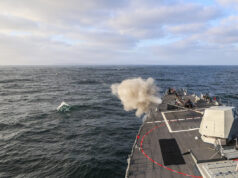
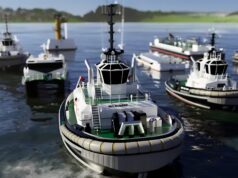
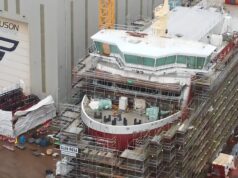
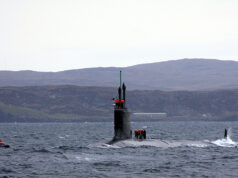
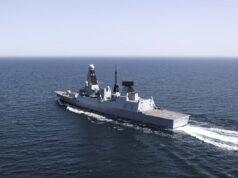

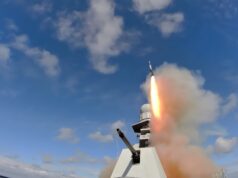
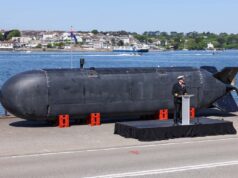
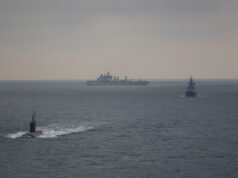
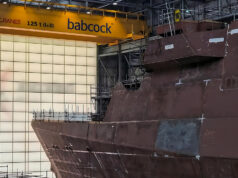

Well, that’s clear then. It’s on until it’s not.
But will it be fitted for but not with and with what 😂 Have I just invented a new term for the MOD!
There seems to be a lot happening in the shipbuilding industry of late.
“The French Navy’s first new batiments ravitailleurs de forces (BRF) logistic support ship (LSS), Jacques Chevallier (A 725), has started sea trials.
Laid down in December 2021 and launched on 29 April 2022, Jacques Chevallier is the first of four new BRFs being built for the French Navy by a consortium comprising Chantiers de l’Atlantiqueand prime contractor Naval Group under a contract awarded in 2019.”
Fincantieri Begins Construction of First Constellation-class Frigate
The type 32 programme “fitted for but not with ships”.
😂 At least the news is finally reaching the public domain and with the chance, albeit a fat one, that we will find the funds to rebuild our armed forces.
If Hunter finds any money it will go to a tax cut to all their rich mates. Zero chance of the MOD getting even an inflation rise.
Judging by the latest predictions from the IMF, he couldn’t find his arse with both hands, but I’m sure there will be some who can in the corridors of power!
Fitted for but not with – treasury funding
😂😂I think when you read through all the yay yay political speak that’s basically what the minister actually said.
lol
Type 32 is on a to do list to be handed to Labour in two years. Not the normal Tory tactic but then there is nothing normal about this Tory “government”.
Oops, I posted my extraordinarily witty comment before I saw your extraordinarily witty comment.
Widely reported in other defence sites that no doubt many people here read such as Janes. As with many of your cut and pastes
Do share 😂
I really don’t get everyone’s fuss over this T32 will it or won’t it or what it is for.
It’s at concept stage and money spent so far is a pittance before any serious money is spent many many years from now once they work out it’s specs.
To be honest the important thing is that the RN get to order another 5 frigate hulls that takes it to 24 escorts. rule of 3 then ensures the RN has 8 deployable escorts…4-5 to nursemaid the carrier and amphibious ships, a fleet ready escort, 1-2 escorts playing east of the med and one for the south Atlantic deployments. The rivers 2s can then do the more benign stuff like home waters fisheries and none hurricane season of the North Atlantic patrol.
Personally I think they would be better off just ordering a batch 2 type 31 for delivery in 2030-2035. That allows the navy and two yards to have security.
Agreed.
I agree, batch 2 Type 31 and some pained grey offshore support vessels for MCM work with drones. If you need to take a minefield out under fire and deploy a drone then use a T26.
Anything that isn’t a Type 31 Batch 2 is a waste of money; a second batch of the ships means money saved as next to nothing will be required in terms of development costs, it’s all just building the things plus perhaps up-gunning them.
Not sure how that fits with the stated objective of the ship which is to launch and retrieve autonomous vehicles or have I missed something. Flight deck? Well deck? How does this fit with T31?
T-31 has a pretty big mission bay under the flight deck, and 3 boat bays, so, if you want to launch and operate USV’s it’s a pretty good start.
Surely if the intent was to get more of the same they would not be muttering on about autonamous systems. With respect there does a reluctance by the contributors on this site to say anything is better than nothing. Is the future of warfare autonamous systems or not?
To be fair what do you need for autonomous systems really:
for air systems you need:
a flight deck for launch and recovery and a hanger to store and maintain them
for surface and sub surface you need:
a place to keep them and maintain them such as a mission bay
a way to launch and recover them such as a crane.
so basically what every escort on order has. All you need is space to store and maintain as well as a way to launch and recover. What these systems really offer is a way to de link capability with a specific hull.
I am not sure what they were thinking around optimising the T32 for autonomous systems…maybe a more focused hanger layout or a swim out well deck for surface and sub surface..who knows. But all the new escorts have autonomous systems in mind…
If you check the A140 website, Babcock & co already have 7 or so design variations of the A140 on offer. T31 is just a subset of the lowest spec gp frigate design.
https://www.arrowhead140.com/modular-system-specific-roles/
It’s highly unlikely the current government will be in place by the time any funds are needed. Even if the conservatives win the next election, I can’t see sunak surviving, too many sub parties with knives out and a fair few trying to bring back their hero in Boris. So it’s as clear as things can be.
I think Boris is done.
He has too many ex-wives and ex-mistresses to fund to be able to afford to be PM.
Marina Wheeler took him to the cleaners, as he was on a short schedule for divorce as he’d got the mistress pregnant.
For whatever reason his still got a lot of mp’s (he got the votes needed to run again sunak but decided not to, I assume because he wanted to let sunak deal with truss mess and fail) supporting him and his very popular with the party members, if less so with the general public. So I wouldn’t write him off just yet.
It’s the general public part that makes me think he wouldn’t get back in as Conservative Party leader, though; he’s proven himself untrustworthy and the Tories would be hammered at the next election if Boris were back in charge.
They’ll probably be hammered anyway, but still…
I wonder if you are right. If you are the type of person who feels the most important issue with Boris is to do with parties etc. then clearly he is toast in your eyes, However if you value the leadership things like backing Countries like Ukraine to the hilt or following through on your main manifesto comittment then perhaps he has something to offer. Kier on the other hand – what does he stand for? I suspect he would have happily let Ukraine fall and attempted to take Putin to court instead. Come the election the Tories might just fancy Boris rather than Rishi as Rishi seems to know the price of everything but the value of mothing.
I think the core practical issue with Boris is that he is incapable of being an effective administrator.
It is possible for a complete bastard to be a decent PM, as we know from history. But not if they are incapable.
IMO BJ is a decent mascot or cheerleader, but if he does not have (so to speak) a Jeeves to actually run things, then he turns into a face painted on an overinflated balloon.
At London, BJ did things like setting a marketing line and getting stuck on fairground attractions, falling into holes in rivers and so on – but he had a decent team backing him up, some of them perhaps surprising.
As PM there was no competent staff operation or attention to detail put in place, at a time of immensely complex negotiations / politics in the EU relationship. And that was unforgiveable since it squandered the opportunities, including much detail which needed setting in place but just fell of the edge of his desk. For example, try taking a Guide Dog to the EU if need one every 2 months to do liaison work.
We know that Johnston is a dishonest shite who does not understand rules and the fundamental need for personal integrity.
As such he is not fit to be in power. If the Tories bring him back imo they deserve extinction.
The bloke’s just an extremely loud, & extremely large, soundbite. See he’s spotted another main chance for Johnsonian advancement (a gene inherited from his execrable father) i.e. telling the whole western world they should send Ukraine fighter jets.
Is the type 32 going to needs led or budget led? I fear I already know the answer…
Rishi been drinking again 🤕
More artificial controversy created by people who should realise one thing. Never trust a politician of any shade, shape or form. Especially blonde overweight piglets who wanted Britannia to rule the waves again 🙄
I’m still a bit convinced the whole programme came about because Boris accidentally said T32 instead of T31 and would not admit he made a mistake.
He was distracted by a woman, as usual. Should have married Dominic instead.
lol
Haha. Pity he didn’t say 5 submarines
What a missed opportunity that was! Nice thought, at least.
Was Angela Raynor there that day? 😉 She ticks all his boxes.
She ticks every red blooded man’s boxes. 🧐
Decorum forbids me mentioning aHiaG before which, TintPoitS.
I’ll get mi coat.
Hideous accent.
She is bound to be noisy.
But the man needs earplugs.
Not that Boris has that many boxes to tick:
It’s sad but I thought the same thing 😂
I am to. His general incompetence is definitely a plausible explanation but once he said it aloud I guess the government was kind of committed to it, and someone somewhere hastily came up with some flashy drawings.
I’m totally convinced of that.
In Ben we trust.
Essentially T32 is so far away, we need to build to classes of frigates before T32, that it’s a placeholder.
Could be a derivative of T31, could be a derivative of T26, could be something completely different and even unorthodox. So while all this is being kicked around for a project years away, no money is going to be reserved for it. All the money coming into the government each year is already being spent, and then some. It’s not going to put any into a piggy bank for T32.
Anybody here decided what car they’re buying in 2031 and saving for it now? 🤷🏻♂️
Honestly… in this case…yes I have…I hit 60 in 2031 and retire with a nice lump sum…..which is going to buy me a VW Buzz all decked out for camping. Sometimes you just got to have plans man 😂😂
Exception that proves the rule 😉
Nice choice of vehicle BTW, though you know the requirements for what you need in 2031. The RN doesn’t. 🤷🏻♂️
(You’re also hopefully not spending more than you earn between now and 2031, unlike HMG.)
Personal finances & government ones are two totally different things…and if they’re not they bloody well shoud be
But they are still governed by both the same laws of finance (eg you can’t indefinitely spend more than you have coming in) and by human nature.
And humans tend to see bigger things in terms that they can relate to personally, analogy allows them to comprehend things that are otherwise too complex for them. However you can only push an analogy so far before it fails.
You can spend more than you have coming in as long as the excess is less than the increase in your nominal GDP. Government debt in itself is a useful commodity and slight over spending produces inflation which at moderate levels is very healthy for an economy. However that excess spending should only be directed at capital expenditure that generates long term growth.
But as you say it should not be used for consumption on things like health or defence spending except in an emergency or on R&D.
You can spend more than what you have coming in if that is CAPEX which is growing the economy such that the incurred debt is recouped in subsequent years through the increased tax take from the larger economy without having to raise taxation rates. It’s also a strategy for dealing with recessions where private sector spending decreases, it both reduces the impact of the recession and can be a stimulus for the economy to reverse its decline and begin growing again.
However there are caveats to this.
• The spending should be on CAPEX not on OPEX, and governments often don’t delineate between ministerial spending on OPEX and CAPEX. For example, I would have defence OPEX set at a fixed % of GDP. But the OPEX variable, depending on what projects were underway. This would prevent operational cuts to fund overrunning projects and make these overspends more transparent.
• This debt needs to be financed, and gilts/ government bonds are the primary instrument here. If market confidence erodes then the interest can suddenly start to dramatically increase on your debt to the point where cash-flow issues occur in servicing the debt. Essentially the market doesn’t believe your spending will result increases tax income sufficiently, they could be wrong but their sentiment is what begat matters. Liz Truss learned this lesson the hard-way.
That depends on whether the person is in the government.
👍
Still think the likely prudent need to consider a stern ramp may be causing pause. As an instance, CETUS, just two years away apparently, is 17 tonnes and at 12 metres already a tightish fit for a container. What’ll be envisaged (unenvisaged) requirement in a decade?
Well when specifying CETUS at 12m x 2.2m and 17t, it was to fit inside a shipping container for air-transport.
If they decide to go bigger for future vessels than yes, a ramp, or dock might be required which would push-up the hull cost.
But I’ve not seen anything about them aiming to deploy the CETUS from a ship. The impression I had is that this, and presumably larger vessels will be operated like submarines; ie from bases.
Yes indeed. But does act as an indicator of the uncertainties inherent in what a T32 concept may throw up, I thought? ‘Easy’ to end up with an irrelevant vessel at present? The Mod-RN deserve some slack, maybe.
I’d think if the start based on the T31 then they should at least end up with a relevant vessel even if they change direction later.
(I think an extra 5 T31s are required, and should be achievable given we’re replacing our manned mine hunting force with autonomous systems, which should free up crews etc.)
👍
It’s good to hear that these ships are still planned. That their exact capability and role his not yet clear is not important – these will evolve – more emphasis on unmanned that’s for certain. What is also certain is that China is expanding its influence and presence in the South Atlantic, East and West Africa and that global warming will open Russian and Chinese access to the North Atlantic. Not saying Britannia needs to rule the waves but we do need a bigger navy!
Love how the chair at today’s procurement session was trying to probe if type 32 only exists because of a Boris misspeak
Utter waste of time trying to score political points. More important things to be asking questions about.
The questioning was woeful and some of the responses just as bad. Thought the Admiral was not as good a speaker as his more junior colleague.
That’s hilarious. I must take a look at that. On BBC Parliament on iPlayer?
Link here, and agree that the Comodore gave a far more assured performance.
https://www.parliamentlive.tv/Event/Index/71807a05-d546-42f0-8069-89a16953ae4e
Thanks Mike.
We’re on what the second PM since Boris. If it wasn’t in anyone elses’ plans it would have been scrapped by now and blamed on him ? The fact it’s in the National shipbuilding strategy suggests the RN at least is keen.
So neither government nor RN knows what they want these ships to do but seem sure we need five!
Well the RN wants them to expand the escort fleet so probably frigates. The number probably comes from how many escorts the RN thinks it needs to fill commitments.
But what kind of frigates? Anti-sub or leave that to T26? Capable of deploying UUVs? Flight deck for helicopters or just operate UAVs? Capability to be operated autonomously? Etc.
I understand the range of options. Suggestions that they would be mother ships for autonomous systems are being overtaken by purchases of commercial vessels for both undersea protection and MCW. I would have thought that the first thing the RN would decide is what missions they want to perform: air defence, ASW, general purpose. The exact equipment to carry out the intended role might be subject to change as the technology moves on. But the overall aim should be known before numbers can be decided.
The fact that the RN have withdrawn their proposal because of cost is also odd. If they have put forward a design in sufficient detail to allow a clear costing, why don’t we know what that proposal is?
They don’t have a design to cost.
The cost with be based on a shopping list of ‘wants’ for the vessels; ie things to give it capabilities. Where these items currently exist they can cost them, even if they’d actually fit some future version of the item. So weapons, sensors (radar,sonar, etc), air capability, etc, etc. would be costed together with a ballpark figure for the actual hull. Given the RN are simultaneously building two new frigate classes currently they should be able to do this accurately.
Either the target cost was too low or they tried to make the ship top end at everything.
The high-low mix concept would say that the general purpose ships should be ok at most things (T31) with the high-end ships specialising in being excellent in one thing (T26 anti-sub, T45 air-defence).
They need to decide where T32 should fit in the high-low mix.
To be honest I think they need to just build them as Type 31 Batch 2s, get them built and in the water to expand the escort fleet to 24 ships.
They’re large enough to be upgraded later for tasks like operating UAVs or UUVs, but for now make them GP frigates like the Type 31s are meant to be.
Increase armament to at least 24-32 Sea Ceptors, 8 NSM plus main gun and defensive armaments, to enable them to operate either as GP or to be useful if part of our carrier group.
I’d agree a T31 Batch 2 makes makes sense, part of the raisin d’etre of the T31 was that it’d be so large and have sufficient spare space as to be adaptable.
T31’s will be getting the NSMs and Sea Ceptors transferred across when the T23s are retired, which is partly why they are so cheap. Though RN has yet to confirm if same numbers as T23, or more, or less…
Gun armaments on the T31 are pretty good already, meeting RN requirement.
So instead of Fitted for but not with we now have….
Designed for but not financed
It irrelevant its designation Type ACME Frigate, beep beep, 32,33, 34, 35 …, what it is relevant is when it is operational.
What is that…it’s an RN beep beep “we’re saved”.
Road runner.
Meanwhile The Telegraph is running the story of a nuclear engineer that glued a broken bold in HMS Vanguard…
prison sentence anyone?
Fired at the very least I’d hope and never to work in that profession again.
Breaking the bolt-heads, well humans have accidents. But covering it up by gluing them on is fraud. That should ALWAYS get you fired.
Must have been promoted after the Batch 2 Rivers by the sound of it.
Seems it was Babcocks turn to glue on the boltheads this time……clearly something they regularly teach in shipyards.
Basically the MoD has kicked the can down the road for a few years – as far as it can. Assuming its an evolution of the T31, the T32 project currently only needs a few £million a year to get it through the Concept Phase. The crunch will come c.2025/26, when either the money is found and allocated in the MoD’s Equipment Plan for T32 Demonstration and Manufacture (contract signed no later than 2028), or Babcock will need to start planning for the run down and mothballing of its Rosyth shipyard. Only a major export order would allow the can to be kicked a second time!
I’m not sure it has been kicked that far at all. It depends on what DefSec meant by coming in after 2030 or 2031. If he meant operational, that’s only 5 years after the 2027 operational date for Venturer and it does suggest an attempt at a smooth segue from one class to the other.
I think the contract will have to be signed far earlier than 2028 if that’s so. First steel was cut on the second T31 last month and they are being produced annually. So first steel cut on the last T31 in Jan 26, and to simply continue, we should look to first steel on the first T32 in Jan 27. Contract by the end of 2025. All T31s are to be delivered by 2028, and given that fitting out and contracter’s trials take time, the T32 better be started at some point in 2027.
Of course Rosyth could survive with a gap that would have to be paid for in the ship price, but the time between concept and contract for smooth transition is very tight, especially if it’s to include preliminary design, a competition with more functional design, and the whole selection rigmarole. Detail design would still have to follow and if T32 isn’t based on an existing design, that could take far longer than a year (as we saw with T26).
I don’t think it’s possible to achieve this with a wholly new design and an existing hull design will have to be used at the very least. If we look at an eighteen month competition and selection process, as we had in the last iteration of the FSSS, both leading contenders had been involved in previous bids for the same ships and still based the design on existing hulls. Working backwards, we’d have to start the competition in mid 2024 to even allow that amount of time, only 18 months from now. I think that’s just about achieveable if it comes out of concept within the next eight months.
So I think the crunch should come in the 2024/25 year, confirmed in the March 2024 budget. That would have to be sorted by this government. Maybe it will be kicked down the road some years, then we’ll either get T31 warmed up or a gap in Rosyth production, perhaps an indefinite one.
So that statement is meaningless then. On another matter… is the Royal Navy going to get new destroyer ships at some point?
T83
Hope the RN gets 12 this time – they were seriously shortchanged last time.
“at some point” Are you a politician Tom😂
Hi Nigel
Am I a politician… to answer that question, and in order to understand the true meaning of political interests, or interesting politics if you will, we would need to look at politics as a whole, and then subdivide the principle activities within the whole issue, and of course take into consideration the human dynamics of the social construct of the…
😄
So you’re Sir Humphrey
😁😁
Sir Numpty maybe 😂
😂How not to give a straight answer!
It’s actually a straight forward and obvious clarification from Ben Wallace. However that doesn’t seem to suit the narrative of certain people commenting on here.
Yes, the doom-mongers and those with a political agenda won’t be satisfied with anything said by Ben Wallace.
Even if he announced he had the funds for 5 ships to be as good as the T26 they’d be complaining that he wasn’t ordering 30 of them or that they weren’t warships because they didn’t have 15” superfiring gun turrets 🤷🏻♂️
But surely repeating FFBNW endlessly on any subject is hilarious ? I mean it is isn’t it ? Like the pub bore telling the same story about the time he …. oh god I think i’ve lost the will to live.
A point made in todays Defence Select Committee was that the team looking at T32 capability are monitoring the progress on T31 as the build continues through some critical stages, mainly getting hull in the water and fitting out of combat systems, to ensure they learn lessons for T32 specification.
Later it was confirmed that HMS Venturer would be in the water by the end of this year before integration of systems (including the CMS) next year, then first in class trials would begin. The reality of this means that if T32 isn’t an iteration of the T31 we’ll be looking at a design competition and selection process that could go on for some time.
Lastly, a good point was made about parts commonality from a procurement, maintenance and logistics perspective, does the RN need a third bespoke design, probably not when budgets are tight.
To me it feels like T31 Batch 2, with some modifications, seems more likely than a significantly different design at this point.
How big does the type 32 need to be?
Big enough
Can you elaborate on that?
yep – not too small…
Consider Goldilocks and the Three Bears.
😆! HMS Goldilocks!
The same size, structure and dimensions as the Type 31 hopefully.
The same everything as Type 31, hopefully.
Save money on design and development costs by simply making Type 32 a Type 31 Batch 2.
Agreed. We can add capabilities as/when the money is available.
I’d want to see increased automation to reduce operating costs. Maybe a shifting around of the mission module space if that’s possible to allow for an increased-size hangar option and better accessibility. If the plumbing isn’t right for PODs, that needs to be addressed. Perhaps a shift of the position of the Sea Cepter silos to leave room for Mk 41s.
If each batch of 5 ships spirally evolves into something better, it helps the case for replacing earlier batches with later ones. I’m wondering if there’s anything that can be done in the design to increase reliability and further reduce maintenance requirements over the first ten years, despite the ships being hard used. Can you get say 200 sea days out of a forward-based frigate every year for ten years? I read we expect around 300 days availability for the River class and dual-crewed ships like Montrose have also averaged better than 200. (What happened to Trent, btw?)
Hi lads.
Apologies for a totally OT question.
What does this mean, exactly?
“low-latency internet backbone connectivity.”
Of course I’m aware of the Internet backbone and connectivity, it’s the “low latency” bit I’m after.
Ta.
mmm latency defines the physical characteritics pertaining to speed of a media …well sort of ,,,in as much as high latency comms mean the physical traits of the connections could mean data transfer could be subject to delay. There could be a physical difference on distinct connections that made up the link causing some data bits to arrive at different times effectively slowing down the actual end-to-end data transfer speeds.
Low latency could for example mean fibre optic connections where the trait of the physical media doesnt unduly impede the actual overall data transfer speed whereas old copper wire would be high latency media- which could.
Hence fibre broadband can accomodate higher speeds due to the nature of the media used.
Does that make sense- its late I’ve had a beer.
Cheers Grizz. It does, the lower the latency, the faster the internet.
Hi Daniele – latency – also called ping – measures how much time it takes for your computer, the internet and everything in between to respond to an action you take, like clicking on a link
Latency is measured in milliseconds and is affected by several factors: distance, propagation delay, internet connection type, website content, Wi-Fi, and your router
Generally speaking, DSl, cable and fibre internet have lower latency measured in the tens of ms, satellite internet generally has much higher latency, measured in hundreds of ms
However, the latest satellite internet systems such as Elon Musk’s Starlink offer high-speed, low-latency services made possible via the world’s largest constellation of highly advanced satellites, operating in a low orbit around the Earth.
Thank you David.
Low latency = minimal drag or delay. Its an engineering and a financial sector trading term.
Thanks Graham, got it.
I must have “high latency” in the! delay in trying to get off my couch, into a 🚿 and out for a ☕ this morning! 😁 Here in 🇦🇺.
I’m all seriousness, I learned some thing here. Good question Daniele and good answers all!
Haha! It is midnight here Q, I’m off in the other direction and my latency will be speeding up considerably!
Excellent news! I’m just getting off my couch now! This UKDJ site is very addictive as is the ocal ☕ here! Good night 🇬🇧.
That’s “local”…
In internet Low Latency means short delay times in response.
So, for example a traditional geostationary satellite would be at 22k miles high, which means there is a time delay for a response via that satellite to elsewhere on earth. Which is why a link to Australia might involve a delay of a second or two – hence the pauses on old TV circuits.
Something like Starlink or UK-France’s OneWeb fly at perhaps 500 miles, so signal response is much lower latency.
One practical thing is that controlling something via Starlink (eg a drone catching video) could be done far more easily and interactively than via the far higher orbit – so the latter drone would perhaps require more intelligence to manage itself more independently and interpret the delayed instructions.
You can measure the latency of your internet connection via the usual measuring sites, or by “pinging” a web address.
Latency really matters to online gamers because they can be shot in the game by a player with a lower latency connection whilst their connection is still communicating instructions.
So, do you know off by chance which towns around London have the lowest latency? I looked it up and it suggested Slough, and, surprisingly, Luton.
You are really getting your moneys worth here.
I know, that is why I asked! Quality site, quality posters…mostly…
Average latency isn’t a very good guide. If you are willing to pay for low latency to the extent you might site a business based on it, you probably want to check the tech that your ISP will be providing rather than just the geography. Full fibre to the premise or home (FTTP) is typically better than fibre to the cabinet (FTTC) is better than ADSL. Many areas still don’t have FTTP available within Open Reach (most providers piggy back off BT), and you might want to avoid those unless you can find a local provider with their own cable network.
It’s not that you can’t get low latency with ADSL, but that then depends on proximity to the exchange and the stability of connection.
Most providers only guarantee bandwith (Mbps) and not all even do that. A low latency provider can guarantee latency below a specific number measured in response time (ms), so you know congestion and contention are being kept to a minimum. If you are findng that hard to come by, check out best ISP for gamers in the area, as gamers are probably the most numerous use case for low latency.
Hi Jon.
Thanks for that most detailed explanation. I’m not looking to move, or even improve my internet or gaming, I was asking about Low Latency for another reason entirely! Thanks anyway!!
There some special network switches that are extremely fast, they are used in special circumstances such as a finance dealing environment.
Anything to cut micro seconds off data transfer times.
In the internet case, it means how many lanes and the speed limits that are used across the interweb before it gets to your local connection.
When I was in the army I used to train the TA. Some of whom were far cleverer than I will ever be.
I had to teach differential calculus to a chap with a masters in mathematics, but, they had to be taught the army way.
Thanks you Dave, I looked up differential calculus…! 😳
Were you with those special RS ( R ) chaps down at Corsham by any chance? LIAG? Seems to be up their street.
Every Royal Sigs TA regt has/had regular soldiers posted there. I used to fix the radios that the TA broke over the weekend.
The TA regt was in Bristol in the 1980s.
We were referred to as PSIs, Permanent Staff Instructors, even though we were only there for three years!
Ah, ok thanks. I can only think of 39 ( Skinners ) as being RS in Bristol now.
I think a better idea is to cancel the Type 32 frigates and replace them with ABM destroyers.
+100
Anyway, Rosyth must bid for ships other than T31/32, sooner or later.
If T32 be delivered by 2038, there will be no escorts to be built in Rosyth until 2050s. Big gap. Is MRSS still NOT be built in 2038? May be, then Rosyth must get that bid (or be closed).
If T32 be put to the right, to be delivered around 2035-2040 (which is a better plan I think, in view technology continuity to build escorts), Rosyth needs “something” to save the day.
For example, join the FSSS build program? The build will start around 2025, and continue until ~2031. At least the man-power can be shared. Skill labors established in Rosyth needs work after ~2026, and FSSS needs to increase their work force after ~2026 as the 2nd and 3rd ships are to be fully built in UK.
I actually get why there is no direct answer other than saying the numbers are in the plans, in early development but we do not need to make a decision yet.
As I have said before we are recapitalising our surface fleet at the same time as renewing our Nuclear deterrent and quietly increasing the number of warheads.
That is a really tall ask and we have done both at the same time, we have never managed this before without cutting the fleet numbers.
If anyone knows anything about cost curves, project development and implementation the peak of costs is fast approaching. Nearly 1 billion £’s is being spent just so we can renew facilities to build the new generation PWR3 reactors and 30 year cores.
So by the time the 1st one is completed in 2030 we will be over the hump and then other decisions can be made.
But by that time the T31 base design (Absalon / Iver Huitfeldt) will be over 30 years old. So I actually think punting any firm decisions down the pitch isn’t only reasonable but is probably very sensible. We may be designing for Hydrogen power by then or needing massive amounts of electric so power has to hybrid of CODOG. Who knows !
On a political note the SNP would crucify any future U.K Government who back peddled on the numbers of frigates that had been promised to be built by a previous administration. Regardless of which party was in power, you can just hear the Wee Crankie writing the words about the lying English Government etc, etc, etc.
So no need to decide yet, no point as we may change the projects direction, it could back fire so don’t do it.
Once the Dreadnought’s are out of the way, Tempest will take their place.
The Type 32 is itself, currently fitted for but not necessarily with.